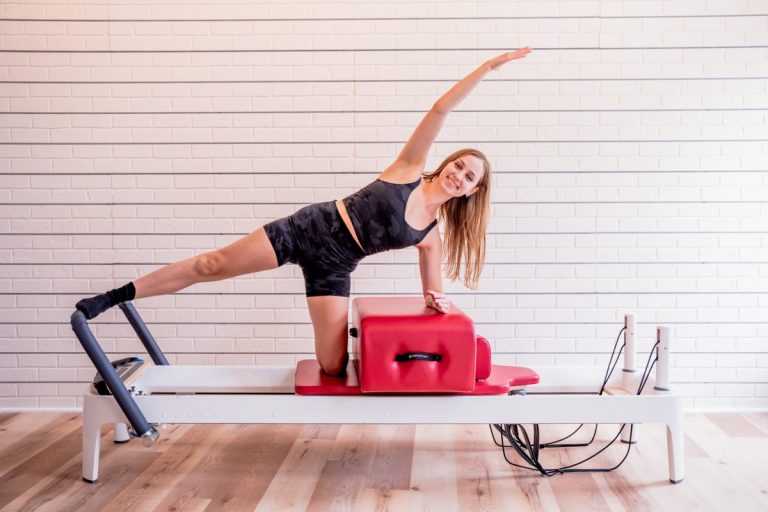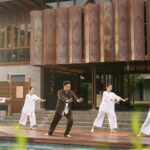In the constant hustle of modern Singapore, burnout and long sedentary phases have become a quiet epidemic. Between desk jobs, digital overload, and packed schedules, both the body and mind often bear the weight of exhaustion. For many seeking a natural, joyful recovery path, zumba classes near me offer more than fitness — they offer renewal. Through rhythm, connection, and movement, Zumba helps individuals regain balance, rebuild energy, and rediscover the joy of living actively.
Zumba’s combination of dance, music, and community makes it uniquely effective for healing from both physical inactivity and emotional fatigue. It bridges the gap between therapy and exercise, providing a safe space to move, express, and release. Whether recovering from work burnout or restarting fitness after years of stillness, Zumba serves as a gentle yet powerful restart button for the body and mind.
Understanding Burnout and Its Impact on the Body
Burnout doesn’t only affect productivity or motivation — it takes a toll on the entire body. Prolonged stress triggers hormonal imbalances, muscle stiffness, fatigue, and even weight gain. Mentally, it reduces creativity, increases anxiety, and leads to emotional detachment.
The same applies to long sedentary periods. When physical activity drops, the body’s metabolism slows, posture weakens, and energy levels dip. Restarting intense exercise after such phases can feel intimidating. Zumba’s accessible and enjoyable structure provides a softer, more forgiving way to rebuild movement confidence.
Why Zumba Works as a Recovery Tool
Zumba’s healing effect comes from its combination of music, movement, and community. It isn’t just about burning calories — it’s about reconnecting with yourself through rhythm and expression.
Here’s why it’s effective for recovery:
-
Joy over discipline: Unlike traditional workouts that feel demanding, Zumba focuses on enjoyment, reducing mental resistance to movement.
-
Holistic engagement: The choreography stimulates both physical and emotional systems, improving mood while strengthening the body.
-
Community energy: Dancing with others fosters belonging and emotional support, helping individuals overcome feelings of isolation.
-
Gradual intensity: Zumba can be adapted to suit any fitness level, allowing a slow yet steady return to activity.
This blend of physical therapy and emotional release is what makes Zumba especially healing for burnout recovery.
The Science Behind Dance and Emotional Renewal
Movement-based therapy has long been used in psychology and physiotherapy to restore balance in the nervous system. Dancing to rhythmic music engages both hemispheres of the brain, improving coordination and emotional regulation.
When you move to music, the brain releases endorphins and dopamine — natural chemicals that enhance mood and reduce stress. This biochemical shift replaces tension with relaxation and fatigue with focus.
In Singapore, where the work culture is demanding, Zumba provides a rhythmic escape. It’s one of the few workouts that simultaneously calms the mind and energises the body.
From Stiffness to Fluidity: Reclaiming Your Body
After long sedentary periods, the body may feel tight or sluggish. Zumba’s gradual, flow-based movements improve flexibility and blood circulation, helping the body regain its natural mobility. The combination of low-impact steps and music-guided pacing makes it easy for anyone to start without fear of overexertion.
Regular participation improves:
-
Posture: Counteracts the effects of sitting for long hours.
-
Circulation: Stimulates oxygen flow to muscles and organs.
-
Coordination: Enhances motor control and balance.
-
Joint flexibility: Prevents stiffness and increases comfort in daily movements.
This slow but steady improvement restores physical confidence, especially for those restarting after inactivity.
The Emotional Reboot: Healing Through Joy
Zumba’s core philosophy revolves around joy. It replaces performance pressure with playfulness. When the mind associates exercise with fun instead of effort, healing accelerates.
Each class acts as a micro-escape from daily stress. The beats, laughter, and group energy trigger the body’s relaxation response, lowering cortisol levels and restoring emotional balance. Over time, this consistency creates lasting change — not just physically, but mentally.
For many participants, Zumba becomes more than a fitness routine. It’s a form of therapy, helping them reconnect with their confidence, social identity, and sense of purpose.
Adapting Zumba for Recovery
Those healing from burnout or long inactivity should approach Zumba with mindfulness and gradual progression. Start with short, low-impact sessions before advancing to higher intensity.
Practical tips for a safe return include:
-
Choose beginner-friendly classes: Look for instructors trained to adapt routines for various fitness levels.
-
Focus on form, not speed: Prioritise comfort and posture over perfection.
-
Stay hydrated: Singapore’s climate can intensify dehydration during workouts.
-
Listen to your body: Rest when needed, and gradually increase intensity over time.
-
Combine with relaxation techniques: Yoga, stretching, or breathing exercises enhance recovery.
Zumba’s adaptable structure ensures that anyone can join — from beginners rebuilding stamina to seasoned professionals seeking stress relief.
Building Resilience Through Rhythm
Beyond physical recovery, Zumba cultivates resilience. The repetitive coordination between mind and body enhances focus, while the consistent rhythm fosters emotional grounding. Participants learn to move with challenges rather than resist them, a valuable lesson both on and off the dance floor.
The sense of accomplishment after each class reinforces self-worth. As confidence grows, motivation naturally follows, turning recovery into a long-term lifestyle shift.
The Role of Community Support
One of Zumba’s greatest healing powers lies in its community. Dancing in a group creates shared positivity, which amplifies motivation and accountability. The smiles, laughter, and collective energy transform classes into uplifting experiences that counter emotional fatigue.
In Singapore, where fast-paced urban life often feels isolating, this sense of connection is priceless. Regular attendance builds friendships and fosters a supportive environment where everyone encourages one another to keep going.
Fitness centres such as True Fitness Singapore cultivate this community spirit, offering structured Zumba programmes where participants find both fitness and friendship under one roof.
Transforming Burnout Into Balance
Burnout recovery requires more than rest; it requires movement. The body and mind heal through action, rhythm, and creativity. Zumba embodies all three, turning recovery into a process of joy rather than struggle.
It teaches you to listen to your body, release tension, and move with intention. Over time, those once burdened by stress rediscover lightness — physically, mentally, and emotionally.
In essence, Zumba helps you dance your way back to yourself.
From Recovery to Rediscovery
Once movement becomes part of daily life again, a deeper transformation follows. Energy returns, sleep improves, and emotional clarity sharpens. Many participants who start Zumba as a recovery tool continue long-term because it reconnects them with life’s simple pleasures — music, laughter, and community.
For those in Singapore navigating high-stress lifestyles, Zumba offers more than exercise. It’s a celebration of resilience, reminding us that healing doesn’t have to be quiet or still — it can be loud, expressive, and filled with rhythm.
FAQs
Q1. Is Zumba safe for people recovering from burnout or prolonged inactivity?
Yes. Zumba’s movements can be adjusted to suit all fitness levels, making it a gentle and effective way to rebuild strength and stamina.
Q2. How often should I attend Zumba classes during recovery?
Start with one to two sessions a week, gradually increasing frequency as your energy and endurance improve.
Q3. Can Zumba help with mental health recovery?
Absolutely. The combination of music, movement, and social interaction reduces stress and anxiety while enhancing mood and self-esteem.
Q4. What if I feel too tired to start exercising?
Begin with low-intensity sessions or even just 10 minutes of dancing at home. The key is consistency, not intensity.
Q5. How long before I notice improvements from Zumba?
Most people feel emotional relief after just one session. Physical improvements, such as stamina and flexibility, become noticeable within a few weeks of regular practice.














